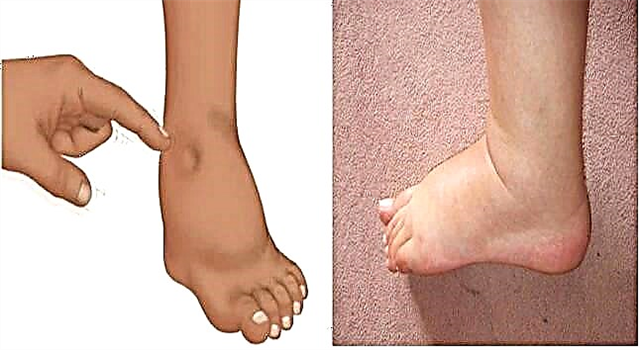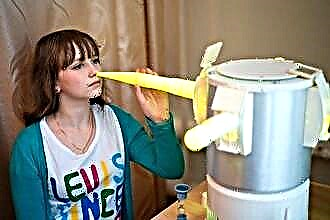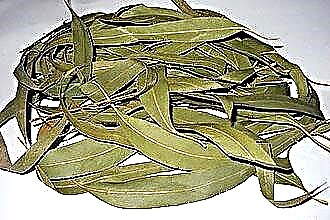Important rules
 To treat a runny nose effectively, you must first understand what led to its occurrence. Rhinitis in a child in the first years of life is usually caused by infectious factors and is an infectious and inflammatory process of viral or bacterial etiology. However, although one-year-old children often suffer from a runny nose, this is due not only to the forming, and therefore imperfect immunity, but also to uncomfortable conditions in the children's room - excessive dryness, overheating of the air, a large amount of dust; the combination of these factors is usually called the microclimate of the room.
To treat a runny nose effectively, you must first understand what led to its occurrence. Rhinitis in a child in the first years of life is usually caused by infectious factors and is an infectious and inflammatory process of viral or bacterial etiology. However, although one-year-old children often suffer from a runny nose, this is due not only to the forming, and therefore imperfect immunity, but also to uncomfortable conditions in the children's room - excessive dryness, overheating of the air, a large amount of dust; the combination of these factors is usually called the microclimate of the room.
An unfavorable microclimate affects both the susceptibility to infection and the severity and duration of the course of a cold of any nature. Normally, the nasal mucosa is moistened, and the mucus secreted by its glands takes an active part in the delay and neutralization of pathogenic agents that penetrate from the outside. If the nasal cavity is dry, the risk of infection and inflammation is higher, and it is extremely difficult to get rid of the symptoms of a runny nose, difficulty in nasal breathing persists even after the fever disappears.
Thus, in order to cure a runny nose in a 1-year-old child, one should first of all pay attention to the characteristics of the microclimate.
The appearance of a runny nose in children makes it necessary to maintain the temperature in the room 18–20 ° C, humidity - 50–70%. Why is this needed? If the child breathes moist, cool air, the mucus in the respiratory tract also remains moist, retains all the properties beneficial to the body - which means that the risk of complications is reduced, and the prerequisites for a quick recovery are created.
Treatment of a common cold in a one-year-old child also requires compliance with the following rules:
- Adequate drinking (especially if rhinitis is accompanied by an increase in body temperature).
- Cleansing the nose of mucus, including before feeding (especially with continued breastfeeding).
- Using moisturizers to toilet the nasal cavity.
- Dosed symptomatic use of medications.
You can drink water (including mineral water without gas), warm baby tea, fresh fruit and dried fruit compote - preference is given to apples, pears, and plums. It is better not to add sugar to drinks. It is necessary to free the nose from secretions, since if nasal breathing is disturbed, the child has to breathe through the mouth, which leads to swallowing air when feeding or completely refusing to eat.
Nose toilet
A runny nose is accompanied by impaired breathing due to edema and mucus. Small children still do not know how to blow their nose qualitatively, moreover, thick and viscous discharge cannot be removed by simply blowing their nose. Cleansing the nasal cavity from accumulated mucus and crusts is a method that allows you to say "no" to lingering colds. How to carry it out correctly? Treatment of a common cold in a 1-year-old child necessitates a home medicine cabinet:
- saline solutions (0.9% sodium chloride solution, Otrivin Baby, etc.);
- nasal aspirator;
- sterile oil (olive, peach, almond).
Some saline preparations are already supplied with aspirators. For a one-year-old child, it is better to choose drops, rather than a spray - drip is safer than pushing liquid into the nose under pressure. Why saline for a cold? This remedy can:
- make the mucus runny;
- mechanically wash off secretions from the mucous membrane;
- moisten the mucous membrane without irritating it.
How to cure a runny nose in a one-year-old child? Discharges, which have become watery from the thick ones, begin to flow out of the nose on their own, swallow. The nasal aspirator makes it easier to clear the nose and removes mucus much faster. In case of viral and colds, inhalation of cool moist air in combination with drip injection of saline preparations into the nose is the basis of treatment.
The advantage of saline solutions is, first of all, the possibility of frequent use. They can be dripped in 2-3 drops even every hour - and it is not necessary to always use an aspirator. If there is little discharge, you can do without it, limiting yourself to instilling the nose.
Drops for the treatment of a cold in a one-year-old child should be warmed to body temperature before use by holding them in the palm of your hand or dipping them in a cup of warm water for several minutes.
The saline solution should not be cold. In addition to the adverse effect on the inflamed mucous membrane, the introduction of cold drops is unpleasant for the child - he begins to worry, prevents the subsequent instillation of the nose. Choose products with a salt concentration of 0.65 to 0.9%, avoid the use of hypertonic solutions - they irritate the already sensitive mucous membranes.
How to cure a runny nose in a child using oil products? Oil for small children is used to soften the crusts in the nose and prevent dryness of the mucous membrane; cotton turundas are impregnated with it. With a satisfactory microclimate and correct application of the saline solution, there is usually no need for oil.
Vasoconstrictor nasal drops
 How to quickly cure a runny nose in a child? Unfortunately, it is not always possible to do with one saline solution - additional drugs will be required in case of significant edema. We are talking about vasoconstrictor drops, "first aid" for rhinitis. Taking the bottle in your hands, pay attention:
How to quickly cure a runny nose in a child? Unfortunately, it is not always possible to do with one saline solution - additional drugs will be required in case of significant edema. We are talking about vasoconstrictor drops, "first aid" for rhinitis. Taking the bottle in your hands, pay attention:
- for the expiration date;
- on the composition and concentration of the active substance;
- on the duration of the therapeutic effect.
An expired drug loses its activity and can be hazardous to health. The composition must contain the active substances allowed for children (Oxymetazoline, Phenylephrine) in a reduced concentration (for example, 0.01%, not 0.1%). There is a huge assortment of vasoconstrictor drops with similar names, so you need to take into account not the trade name (Nazivin, Vibrocil), but the active basis, which determines the pharmacological effect.
The duration of action (for example, about 6 hours) is the period during which the effect of the vasoconstrictor drops persists. Short-acting drugs are much easier to overdose. When thinking about how to treat a runny nose in a 1 year old child, you need to remember that the frequency of administration of drops is from 2 to 4 times a day - this is what you should be guided by when choosing. However, the drug is not used prophylactically, but only if there are symptoms of a runny nose - if you can get by with a single administration, it is better to do so.
To eliminate a runny nose in a one-year-old child, no more than 1-2 drops of the drug are injected into each nostril, after clearing the nose with a saline solution.
Important note: vasoconstrictor drops do not treat a runny nose, they are intended to temporarily relieve swelling that is preventing the nose from breathing. They are also used if the nose is stuffy with a fever, the child develops shortness of breath, and the doctor has confirmed the presence of otitis media or sinusitis. It is better to continue using the product for no more than 3 days, although if necessary, the treatment can be extended up to 5 days.
There are two main methods of nasal instillation:
- Lay the child on his back with his head thrown back - this position remains for several minutes after the introduction of the drops.
- Invite the child to throw his head back, inject drops and tilt his head down, while gently pressing the nostril against the nasal septum. Repeat with the second nostril.
It is believed that in the second case, the ingestion of drops is prevented, and they act only locally, exclusively on the nasal mucosa. However, such an introduction requires a certain dexterity from the parents. Drops must be warmed before use in the same way as saline solution.
Treatment of a child who is one year old is carried out only under the supervision of a doctor - a specialist will explain what parents can do on their own, what drugs will be needed to improve the condition. A responsible attitude to the treatment of the common cold will help to avoid dangerous complications and speed up recovery.



